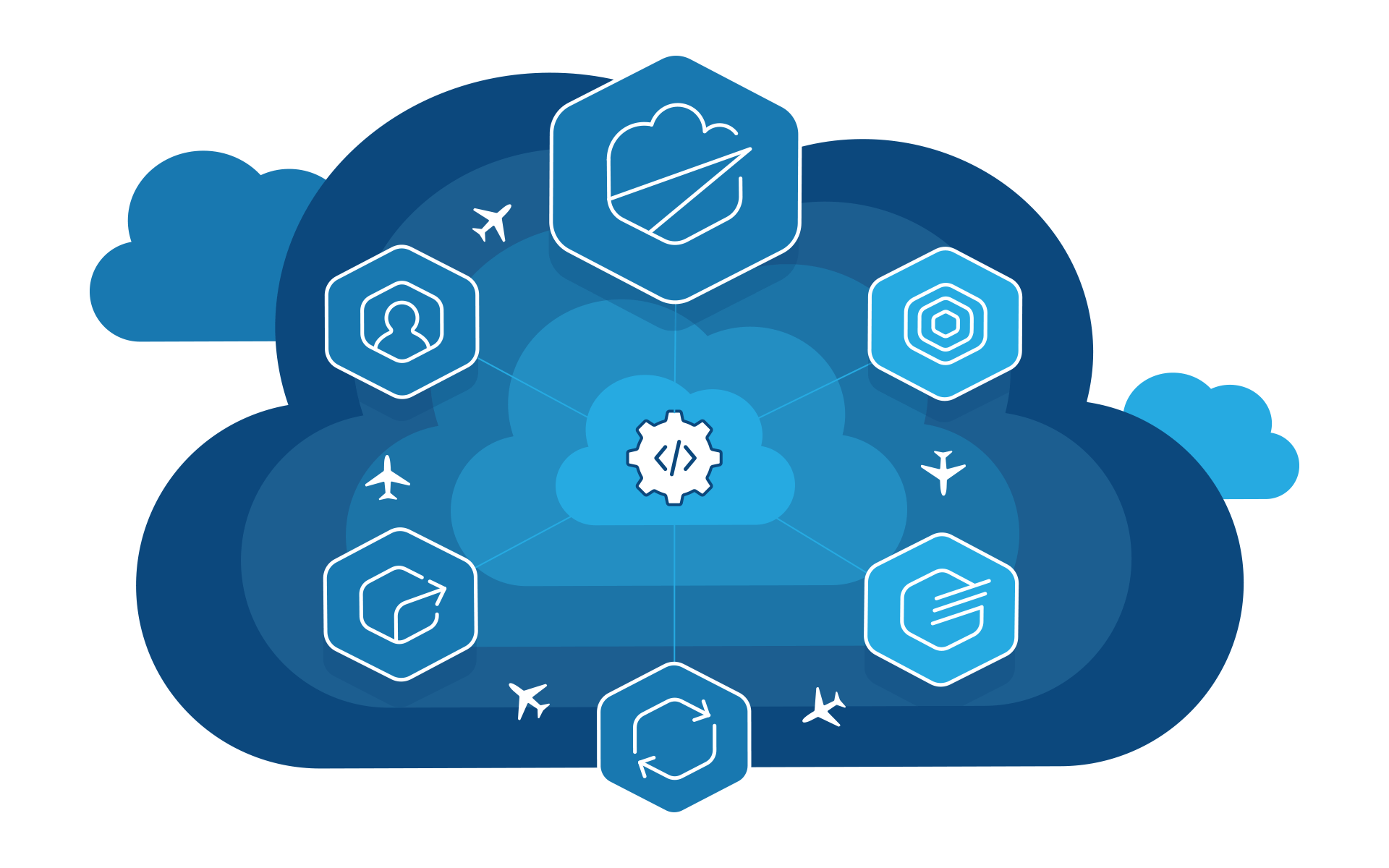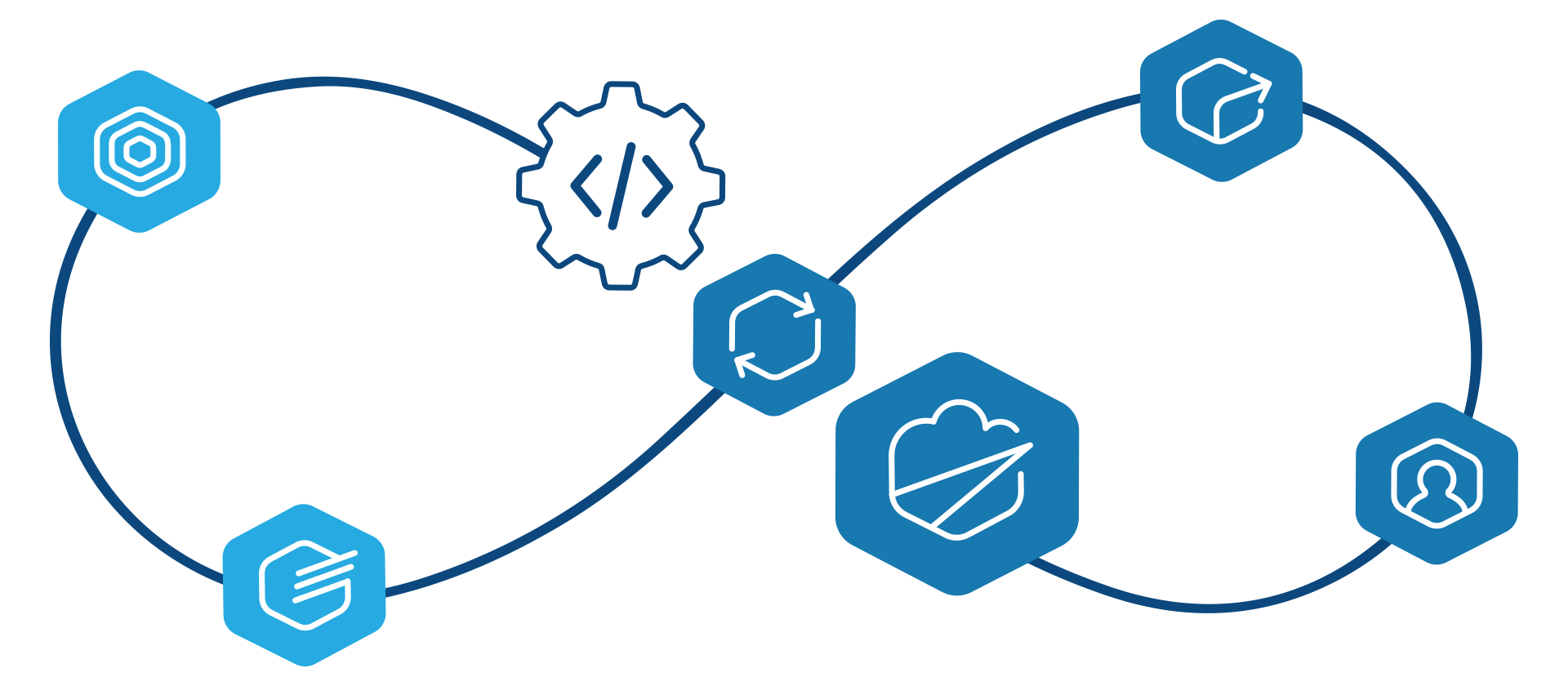

A Single Backend for All Digital On-Board Services
Eliminating Technological Barriers and Long Certification Cycles
The pace of digital transformation in the aviation industry puts tremendous pressure on airlines. According to IT Pro Portal, more than 90% of leaders are looking to invest in digital initiatives to improve customer experience, airline performance and competitiveness. For ages, airlines relied on digital backends that were siloed and built on propriety infrastructure. These systems were not built to adapt to the shifting demands of modern passenger and crew needs.
The deployment of digital services on an aircraft consists of multiple workflows. Starting with ingesting data, content, and services, managing them, and synchronizing and deploying them within the aircraft. Typically these workflows are scattered across multiple systems. And result in a considerable amount of time and effort for installing new functionalities, upgrading existing systems, and even for maintenance.
The Need For Standardization
Deploying digital services on aircraft is no easy feat. A lot of effort goes into customizing applications to fit on-board hardware. You must also sit through long certification cycles before they can be deployed on-board. Hence, the industry direly needs a solution that can standardize the process of managing and deploying digital services.
A standardized software architecture adds speed and agility when onboarding new services and updating existing ones. Moreover, the architecture is engrained with agility from the bottom up, hardware agnostic, and highly compatible with all types of software.
Further benefits of standardization include
-
Easy to centralize and manage workflows.
-
Speeds up the integration of new functionalities and features.
-
Reduces development cost and time by enabling the use of commercial off-the-shelf hardware and software services.
One Solution: Limitless Possibilities
Axinom On-Board Cloud offers the ideal software architecture for on-boarding novel digital services. The solution centralizes the ingestion, management, and deployment of data, content, and services on an aircraft. It utilizes an open and standardized architecture as a unified front to combine multiple services with various digital passenger, cabin, and crew systems. It also reduces the fragmentation of operating and maintaining multiple hardware servers for numerous digital services. The platform can utilize any hardware, data type, or operating system, making it truly agile and flexible.
“Through an isolated deployment approach, Axinom On-Board Cloud eliminates any certification worries and brings your digital services to life faster. Its open architecture unlocks countless passenger, crew, and avionics use cases limited only by imagination”, says Oleg Knut, Chief Solution Architect at Axinom.

Streamlined Workflows On a Unified Front
1. Centralized Ingestion and Management
The on-ground management system of the Under 1. Centralized Ingestion and Management hyperlink on-board cloud with Axinom On-Board Cloud Service provides a centralized UI for ingesting and managing data, content, and services. You can ingest content from multiple CSPs (Content Service Providers), manage various content types, add and manage metadata, create custom content sets and software packages, define rules, etc., with a provision for easy integration with existing infrastructure.
2. Targetting to Specific Fleet or Aircraft
The centralized system allows you to assign your content sets and software packages to a specific fleet or aircraft. For instance, you may have a different content set for shorter-haul flights compared to longer-haul ones.
3. Robust and secure synchronization
The On-Board Cloud infrastructure utilizes the Axinom Sync Service for robust and secure data bidirectional synchronization between aircraft and on-ground servers. The sync service allows uploading and offloading of data, use of multiple synchronization channels (LAN, Wi-Fi, 4G, 5G, LTE, satellite networks), data transfer interruption management, prioritizing important data, and controlling transfer costs.
The whole system architecture also supports the back-channel delivery of any kind of content that is generated on on-board servers, like system health data, log files, payment data, etc.
4. Containerized deployment
On-board Cloud uses a containerized deployment approach where in-flight services are encapsulated and isolated from the system, critical data, and operation services. This isolation and strict control translate to zero certification needs for UMS (User-Modifiable Software) services, with faster time-to-market and reduced initial operational costs. Moreover, with containerization, any service can run on top of fragmented hardware with different specifications.
5. Content Accessible via Seatback Screens or via the convenience of personal devices
On-board Cloud enables wireless IFEC use-cases through seatback screens and personal devices using on-board wireless network infrastructure. This reduces the clutter of traditional seatback systems and addresses the growing concern for hygiene. Moreover, it gives the passengers the experience and convenience of dual screens.
Endless Opportunities
As for use cases, there are infinite. Airlines can build seamless connected experiences not just for passengers but also for their crew - from wireless IFEC and smart cabins to IoT and predictive maintenance. In addition, through seamless integrations with third-party and connected services, airlines can explore new avenues for personalization and ancillary revenues. Whether that be applications connected to CRM systems that allow for innovative e-commerce; crew devices that provide individual passenger insights to give them tailored service; greater operational efficiency through connected IoT systems and much more!








